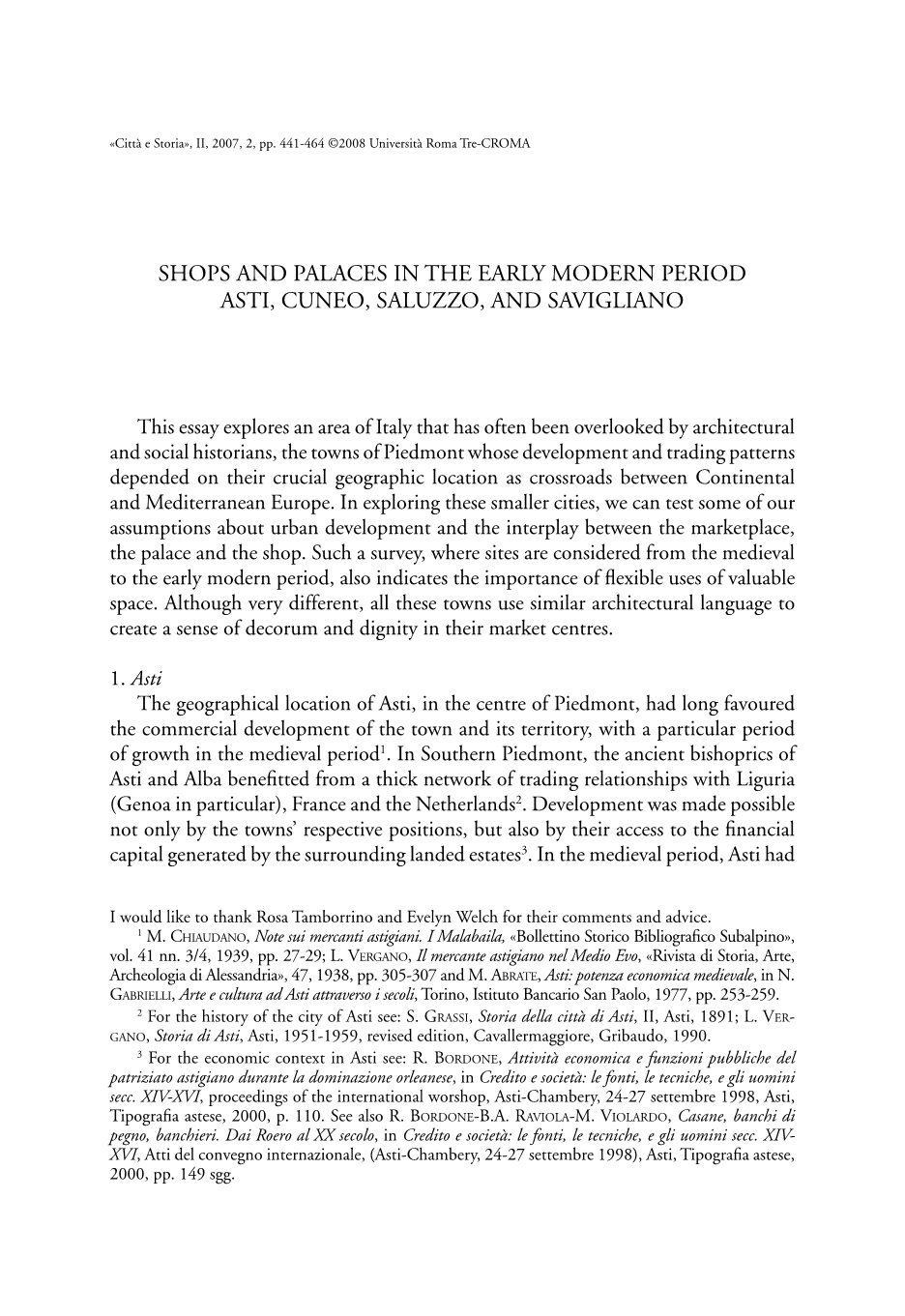Indice dei fascicoli
CITTÀ & STORIA » 2007/2 » Shopping and Housing
ISSN 1828-6364
Beltramo Silvia
Shops and palaces in the Early Modern period: Asti, Cuneo, Saluzzo and Savigliano
pp.441-464, DOI 10.17426/51797
Articoli
Abstract: The urban spaces of the main cities in Western Piedmont cities underwent common patterns of transformation in terms of housing and shopping between the twelfth and the sixteenth centuries. The relationship between the public, collective sites and more private, domestic spaces, was, in terms of property, one of the major ties that shaped architectural language and the disposition of interior space.
Piedmontese palaces were articulated systems which linked the spaces of family life to those of the community that shared part of the building (including arcades and shops). In the major Piedmontese centres, the widespread reuse of medieval buildings was common in later periods. The building materials and decoration were often updated, but this was not always consistent and it is important to look at how and where such changes took place. This essay therefore, looks at the relationship among residential palaces, shops and the urban space in a number of cities to examine how much of the medieval arrangements survived into later periods, both on an urban scale and in terms of individual architectural designs.

Referenze
- download: n.d.
- Url: http://archivio.centroricercheroma.it/?contenuto=indice-dei-fascicoli&idarticolo=763
- DOI: 10.17426/51797
- citazione: S. Beltramo, Shops and palaces in the Early Modern period: Asti, Cuneo, Saluzzo and Savigliano, "Città & Storia", II/2, pp.441-464, DOI: 10.17426/51797

